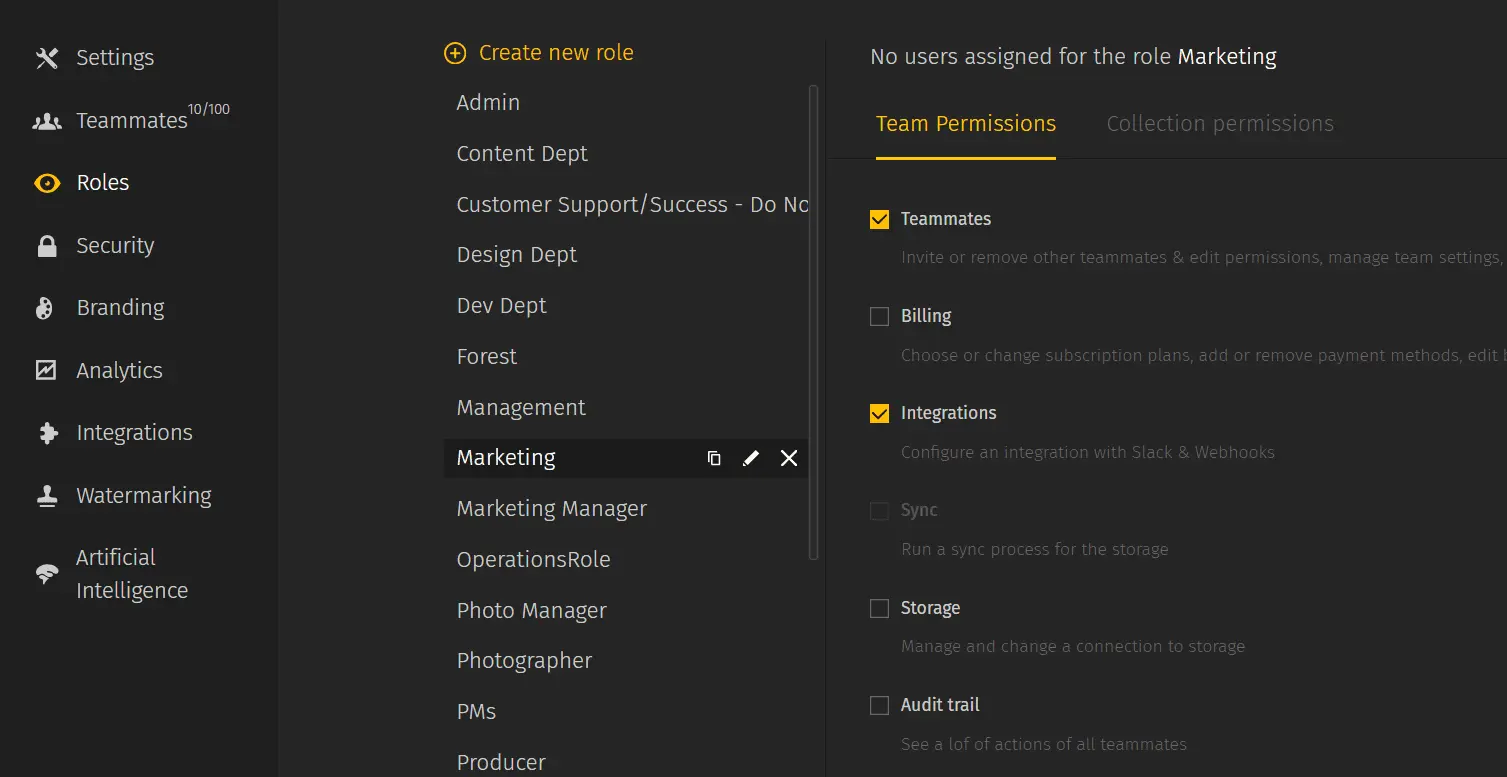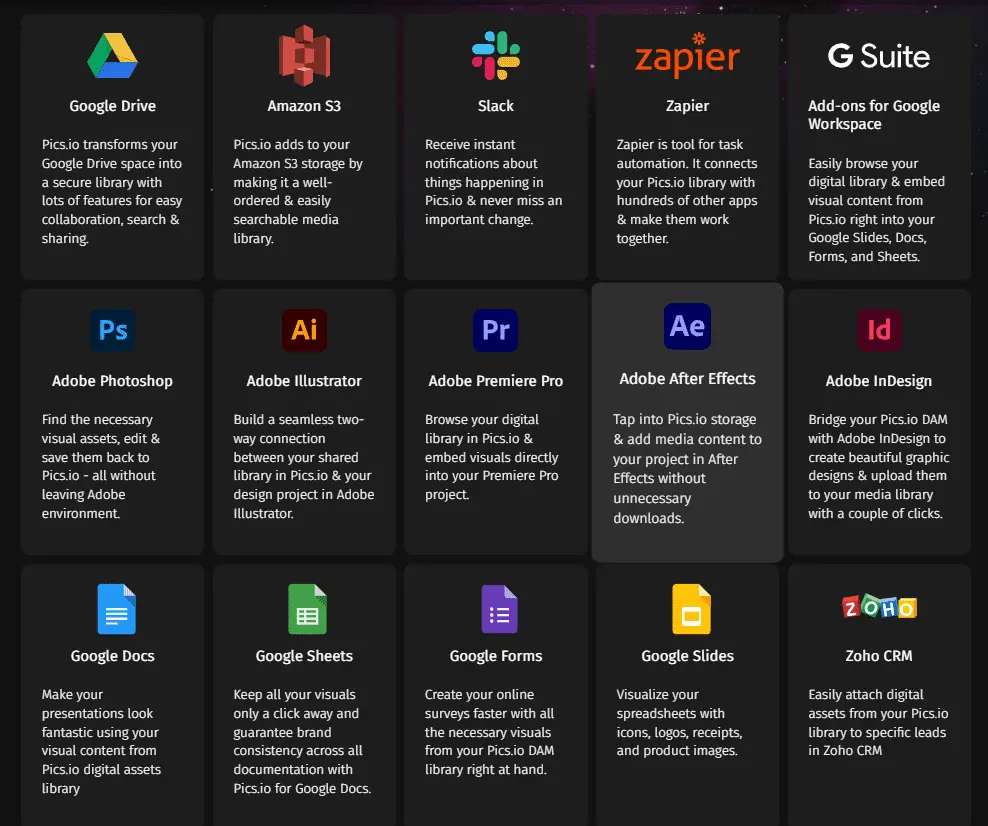In this article, you’ll learn:
Cloud Digital Asset Management (DAM) is a modern solution for organizing, storing, and retrieving digital assets effortlessly. But what truly sets it apart?
In this comprehensive guide, we'll delve into the standout features of cloud DAMs and how they stand head and shoulders above traditional systems.
What is a Cloud DAM
Cloud Digital Asset Management (DAM) is essentially a centralized digital library. Think of it as a sophisticated, online storage system where you can organize, store, and retrieve your digital assets with ease. Since it's cloud-based, it's accessible from anywhere via a browser and users are not tied to a specific device or location.
What sets cloud DAM apart is its foundation on the SaaS (Software as a Service) model. This means there's no need to purchase, install, or maintain hefty software. You simply subscribe to a service, open your browser, and have immediate access to all your digital assets in an organized, intuitive environment.
Unlike cloud-based systems, on-premise DAM is installed and hosted on a company's own servers and comes with the responsibilities of managing hardware, software updates, and handling maintenance in-house.
Benefits of Cloud DAM
Cloud digital asset management solutions don’t differ much in functionality from on-premise DAMs. However, DAM systems located on the cloud have much more advantages.
Better collaboration
In a world where teams are spread across different locations and devices, cloud DAM ensures seamless synchronization of digital assets. No matter where you are or what device you're on, you can access, share, and work on your digital content in real time. This centralized system not only streamlines workflows but also fosters better communication and cooperation among teams.
Faster Deployment
Unlike traditional on-premise solutions, cloud DAM doesn't require on-site installation or integration with existing IT infrastructure. This means businesses can get up and running quickly, without the delays of hardware setup or compatibility checks. The cloud-based model simplifies the launch process, allowing teams to dive into managing their digital assets almost immediately.
With Pics.io cloud DAM, things get even faster. If you're using AWS or Google Drive storage, you simply sign up, connect the storage you need, and can use your cloud-based asset management the same day with our integration!
Faster Upgrades
The cloud-based model means that upgrades are rolled out swiftly over the Internet, eliminating the need for manual installations on individual internal hard drives. This means that users always have access to the latest features, improvements, and security patches without downtime or intervention.
Security Standards
Cloud digital asset management (DAM) has often faced skepticism regarding its security, with many people mistakenly believing that on-premise solutions offer tighter protection. However, the reality is that cloud DAMs are equipped with cutting-edge security standards that rival, if not surpass, their on-premise counterparts.
Cloud-based digital asset management providers invest heavily in multi-layered security measures including GDPR compliance for data privacy, Single Sign-On (SSO), and robust data recovery mechanisms to safeguard against potential losses.
What’s more, just like with on-premise digital asset management solutions, one can set up accesses and user roles in cloud DAMs. In such a way, the necessary digital assets are available only to those employees who are directly working with this content.

No Software Licenses to Manage
Since everything operates in the cloud and no hardware is installed, there's no need to juggle or renew multiple software licenses. This not only reduces administrative overhead but also sidesteps the complexities and costs associated with keeping track of licenses, ensuring compliance, and managing renewals. With cloud DAM, businesses always operate on the latest version without the hassles of traditional software licensing.
Affordable and Scalable Storage
As the volume of digital assets balloons over the years, there's no going over capacity limits. Instead, you simply purchase additional storage as required. This flexibility means you're not overcommitting financially upfront but can scale your storage seamlessly.
Moreover, since everything's online, users can access the platform without needing individual software installations or dedicated hardware. Cloud digital asset management system is an economical, scalable solution, where you only pay for what you need while still benefiting from top-tier asset management capabilities.
Multiple Integrations Available
Cloud DAM systems can seamlessly connect with a wide array of other platforms and tools, be it CRMs, content creation tools, marketing platforms, or e-commerce solutions. These integrations enable a more unified workflow, reducing data silos and ensuring that digital assets are easily accessible and usable across various departments and platforms. With multiple integrations available, a DAM system can be tailored to perfectly fit the unique needs of any organization.

Less Work for the IT Team
With cloud asset management solutions, the nitty-gritty of upgrades, patches, and maintenance falls on the provider's shoulders. This means the IT department can breathe a sigh of relief, as they're freed from the usual rigors of system management. The provider handles all the back-end work, ensuring the platform is always running smoothly and efficiently.
Easy File Sharing for both Internal and External Stakeholders
Users can select files of diverse formats and share them via dedicated websites (links) that can be protected with passwords (up to you). Not just limited to outgoing shares, cloud DAM platforms also facilitate receiving files from third parties, be it feedback on a design or contributions from external collaborators.
Every shared asset remains under the protective umbrella of the DAM environment. Beyond just secure sharing, the system offers transparency, allowing tracking of asset interactions – who accessed it, when, and what changes were made.
Who Uses Cloud Digital Asset Management Systems
Let's see who typically benefits the most from cloud DAMs:
Internal Users:
- Sales and Marketing Teams
These teams are often at the forefront of asset usage, leveraging various materials for presentations, campaigns, outreach, and other marketing activities. A cloud DAM system provides them with instant access to the latest approved digital assets, ensuring brand consistency and efficient communication.
- Designers and Creatives
For creative minds, a cloud digital asset management is like a well-organized digital canvas. It offers an organized repository of their work, from drafts to final versions, making it easier to collaborate, iterate, and reference past projects.
For creative minds, a cloud DAM system is like a well-organized digital canvas. It offers an organized repository of their work, from drafts to final versions, making it easier to collaborate, iterate, and reference past projects.
Designers can integrate DAMs with such tools as Figma, Canva, Adobe Creative Suit, etc., and have access to all their creative files right away.
- Communications and PR
These departments manage a company's public image. With cloud-based digital asset management software, they can quickly locate key assets like press kits, logos, and official statements, ensuring timely and consistent messaging.
External Users:
- Agencies
Partner agencies can benefit from shared access to relevant assets or deliver the necessary content to their contractors with the help of DAM.
2. Clients
For businesses that deliver content or design to clients, a DAM system can serve as a shared space for reviews, approvals, and asset delivery, streamlining client interactions.
- Contractors and Freelancers
External contributors can tap into the DAM system to upload their work, get feedback, or access necessary files. This fosters efficient and faster collaboration without the complications of email chains or file transfer platforms.
All in all, cloud DAM systems cater to a diverse user base, bridging gaps between internal teams and external partners, all while centralizing and simplifying digital asset management.
How to Set up a Cloud DAM Solution
Starting with your own cloud digital asset management (DAM) software has never been easier. You only need to create your account and choose a subscription plan.
If you need your assets moved from your previous storage, the Pics.io team can help with data migration and do it for you safely.
Finally, with Pics.io, you get your own customer success manager who is always available within your time zone. They will answer any questions and can conduct DAM training for your teammates if needed.
Did you enjoy this article? Give Pics.io a try — or book a demo with us, and we'll be happy to answer any of your questions.



